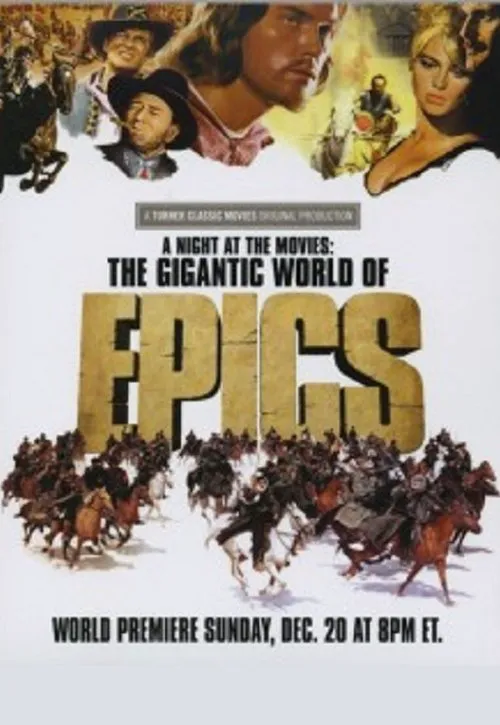A Night at the Movies: The Gigantic World of Epics

Plot
A Night at the Movies: The Gigantic World of Epics embarks on a captivating journey through the evolution of the epic film genre, chronicling its inception, triumphs, and eventual decline, before witnessing its magnificent rebirth in modern times. As the title suggests, this special is an homage to the cinematic masterpieces that have captivated audiences worldwide for over a century. The exploration begins with the dawn of epics, focusing on the groundbreaking silent film "The Birth of a Nation" (1915). Directed by D.W. Griffith, this influential work established the epic genre as we know it today, showcasing its ability to transport viewers to another world through stunning visuals and powerful storytelling. This early masterpiece set the stage for the era of cinematic spectacle, with its epic battles, sweeping scenery, and tragic love stories. As the years unfolded, epics continued to captivate audiences with their grandeur and emotion. In the 1930s, epic films such as "Gone With the Wind" (1939) and "Samson & Delilah" (1949) became iconic symbols of Hollywood's golden age. These blockbusters not only boasted large-scale productions and elaborate set designs but also tackled complex themes, such as love, war, and sacrifice. With the advent of Technicolor, epics became even more breathtaking, immersing viewers in vibrant worlds that felt both fantastical and grounded. The post-war period saw the rise of epic films that pushed the boundaries of storytelling, spectacle, and innovation. Cecil B. DeMille's "The Ten Commandments" (1956) stood as a testament to the epic's ability to awe and inspire, featuring an impressive cast of characters, a sweeping narrative, and groundbreaking visual effects. Meanwhile, William Wyler's "Ben-Hur" (1959) showcased the epic's capacity for drama, suspense, and action, with its intense chariot racing sequences and compelling performances. This era also witnessed the emergence of some of the most celebrated epic filmmakers in history. One such director was David Lean, whose "Lawrence of Arabia" (1962) redefined the epic genre by blending stunning visuals, powerful performances, and a gripping narrative. Lean's meticulous attention to detail and unwavering commitment to artistic vision transformed epics into a new level of cinematic sophistication. Lean's contemporaries, including George Stevens, Fred Zinnemann, and Stanley Kubrick, also left an indelible mark on the epic genre with their works. "The Diary of Anne Frank" (1959), "A Summer Place" (1959), "Dr. Strangelove" (1964) and "2001: A Space Odyssey" (1968), showcased a blend of epic storytelling, complex themes, and innovative filmmaking that pushed the boundaries of what audiences expected from a movie. The 1970s, however, witnessed a decline in the epic genre's popularity. Audiences and filmmakers began to favor more intimate, character-driven films that eschewed grandiose spectacle for more personal, grounded storytelling. As the years went by, the epic genre continued to fall out of favor, with fewer and fewer films attempting to recapture the grandeur and scale of the classics. However, with the dawn of the new millennium, the epic genre underwent a remarkable resurgence, with films like "GLADIATOR" (2000), "BLACK HAWK DOWN" (2001), "Master and Commander: The Far Side of the World" (2003) and "Troy" (2004), showcasing a new breed of epic filmmakers, willing to take risks and scale new heights. This revival marked a turning point for the epic genre, as films like "Dances with Wolves" and "Braveheart" demonstrated that even the most ambitious and sprawling epics could capture the hearts of modern audiences. Throughout its journey, "A Night at the Movies: The Gigantic World of Epics" presents a rich tapestry of stories, characters, and cinematic achievements that define the epic genre. From the early works of D.W. Griffith to the blockbuster spectacles of today, this special film showcases the epic's enduring power to captivate, inspire, and awe audiences worldwide.
Ulasan
Rekomendasi



